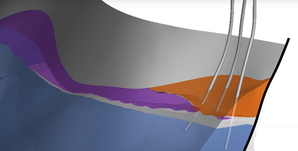Unlocking the Potential: New Zealand's Pioneering Underground Hydrogen Research
Key Ideas
- New Zealand researchers are exploring the injection, storage, and extraction of 10,000 tonnes of underground hydrogen in Taranaki.
- The study aims to address challenges like managing reservoir pressure, minimizing hydrogen loss, and maintaining gas purity for a hydrogen future.
- Hydrogen storage could serve as a buffer for energy needs and a framework to optimize storage and minimize transport challenges nationwide.
- The research focuses on precise timing of hydrogen injection and extraction, highlighting the potential for green hydrogen usage during surplus energy periods.
A pioneering research project in New Zealand is delving into the feasibility of underground hydrogen storage at a natural gas site in Taranaki. Led by PhD candidate Liu Jinjian and supervised by UC Associate Professor David Dempsey, the study models the injection, storage, and extraction of hydrogen to simulate the complex processes involved. The research underscores the importance of managing reservoir pressure, minimizing hydrogen loss, and maintaining gas purity for potential hydrogen applications. While challenges like contamination during extraction exist, the study aims to develop a framework applicable nationwide to optimize storage and tackle transport hurdles. Professor Dempsey emphasizes the strategic timing and precision required for injecting and extracting hydrogen underground, highlighting the potential for utilizing green hydrogen during surplus energy periods. This innovative approach could pave the way for New Zealand's hydrogen future and contribute to energy sustainability.
